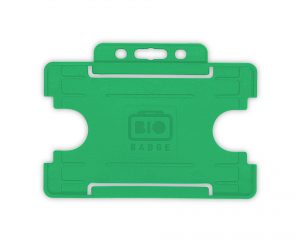Can you recycle PVC ID cards and ID card holders?
In theory, PVC plastic cards are infinitely recyclable. Depending on its original application, PVC can be recycled as many as eight times. This is because the PVC molecules don’t change when they are melted down. However, things get more complicated when it comes to ID cards and access control cards. If your card contains technology such as magstripe or internal chips, or if it features any form of metallic hologram or external markings, it’s not easy to recycle through standard household waste disposal.
The other issue that comes with recycling ID cards is that many will display personal information. For companies to remain GDPR compliant, it’s necessary to use secure shredding services to dispose of items like ID cards. You’ll have to ask your supplier whether or not the cards are recycled; it will often depend on if the cards are contaminated or uncontaminated. If your cards feature metallic pieces or technology, it’s likely they will be considered contaminated.
Can you recycle lanyards?
Lanyards are traditionally made up of several different materials. First up, you’ve got the fabric material itself. Virgin polyester material and rPET are both recyclable, while Bamboo lanyards are designed to degrade naturally and doesn’t need to be recycled. This is usually split into two with a plastic breakaway safety clip, while all lanyards feature a metal or plastic attachment clip too. This means to be recycled efficiently and without contamination, they need to be broken down into individual pieces.
You should reuse your lanyard as much as possible before throwing it away, but if you have lanyards that are branded, out of date or have been created for a specific event, you’ll need to break them down into their component pieces for them to be accepted for recycling.
Can you recycle PVC card holders?
PVC card holders, on the other hand, are easier to recycle because they do not contain technology or metal. It’s always a good idea to reuse these card holders as much as possible, and once you buy your ID card holders – whether PVC or BioBadge – they should last indefinitely.

